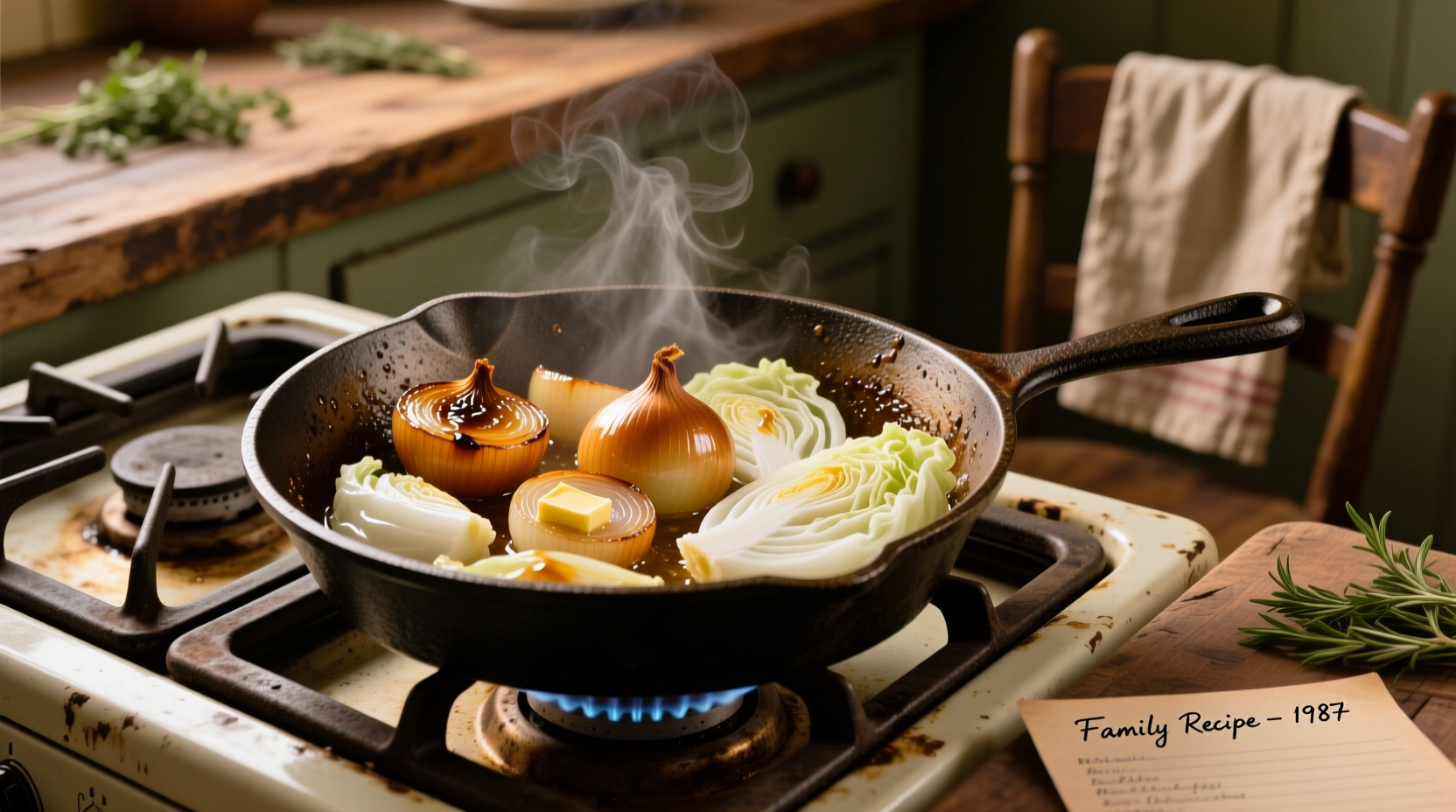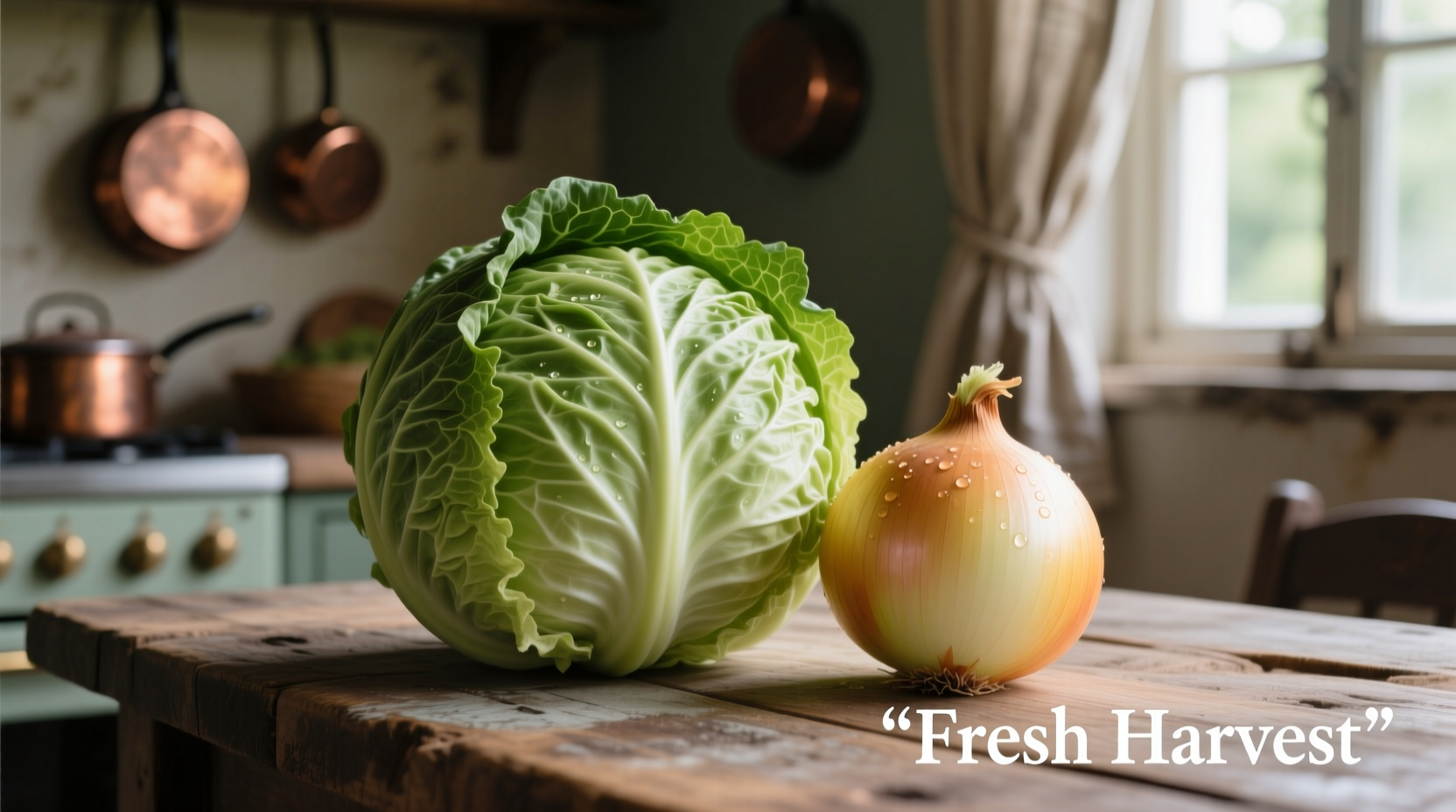Many home cooks search for “cabbage onion” expecting a single vegetable variety. In reality, cabbage (Brassica oleracea) and onions (Allium cepa) are separate vegetables that form one of cooking’s most versatile duos. Their natural flavor synergy makes them kitchen staples worldwide, from German sauerkraut to Indian curries.
Why Cabbage and Onions Belong Together
These vegetables share complementary chemical properties that enhance each other’s flavors. Onions contain sulfur compounds that mellow when cooked, while cabbage’s glucosinolates develop sweeter notes through caramelization. When combined, they create complex flavor foundations for countless dishes.
| Vegetable | Primary Flavor Compounds | Best Cooking Methods |
|---|---|---|
| Cabbage | Glucosinolates, sulfur compounds | Slow braising, fermentation, quick stir-frying |
| Onions | Thiosulfinates, allyl sulfides | Sweating, caramelizing, roasting |
Global Culinary Applications
Chefs worldwide leverage this vegetable pairing for its adaptability across cooking techniques. In Eastern European kitchens, onions are first sweated until translucent before shredded cabbage joins the pan for classic stuffed cabbage rolls. Korean kimchi makers layer napa cabbage with scallions (a close onion relative) and seasonings for fermentation.

Maximizing Flavor Synergy
Professional kitchens follow specific sequencing to optimize this pairing:
- Sweat onions first – Cook chopped onions in fat over medium-low heat until translucent (5-7 minutes). This develops sweetness without bitterness.
- Add cabbage strategically – Introduce shredded cabbage after onions soften. Dense green cabbage needs 10-15 minutes of cooking, while delicate napa requires just 3-5 minutes.
- Layer acidity – A splash of vinegar or citrus juice after cooking brightens both vegetables’ natural flavors.
Nutritional Powerhouse Combination
When prepared properly, this duo delivers enhanced nutritional benefits. Onions contain quercetin, a flavonoid whose absorption increases when paired with cabbage’s vitamin C. The USDA’s FoodData Central shows that one cup of cooked cabbage with onions provides:
- 65% of daily vitamin C needs
- 30% of vitamin K requirements
- Significant fiber content (5g per serving)
Practical Storage and Preparation Tips
Extend freshness with these professional techniques:
Storage guidelines: Keep whole cabbage heads in cool, humid conditions (32-40°F with 90-95% humidity). Store onions in cool, dry, dark places with good air circulation. Never refrigerate whole onions as moisture accelerates spoilage.
Preparation secrets: Soak sliced onions in ice water for 10 minutes to reduce sharpness while maintaining crunch. For cabbage, remove the tough core first by cutting wedges and slicing parallel to the core—this preserves texture during cooking.
Common Cooking Mistakes to Avoid
Even experienced cooks make these errors when combining cabbage and onions:
- Overcrowding the pan – Leads to steaming instead of browning. Cook in batches for proper caramelization.
- Adding salt too early – Draw out moisture prematurely. Wait until vegetables begin softening.
- Mixing incompatible varieties – Avoid pairing strongly flavored red cabbage with mild Vidalia onions.
Seasonal Pairing Recommendations
Adjust your combinations based on seasonal availability:
- Spring: Use young green cabbage with scallions for fresh slaws
- Summer: Combine sweet corn, napa cabbage, and red onions in salads
- Fall: Braise savoy cabbage with caramelized onions and apples
- Winter: Ferment green cabbage with garlic scapes for kimchi variations
Frequently Asked Questions
Can I substitute onions for shallots when cooking with cabbage?
Yes, but adjust quantities. Shallots have milder flavor, so use 1.5 times the amount of onions called for. For 1 cup chopped onions, substitute 1½ cups chopped shallots for similar flavor impact.
Why does my cabbage and onion mixture turn out watery?
This happens when vegetables release moisture faster than it evaporates. Fix this by cooking over higher heat initially, using a wider pan for better evaporation, and avoiding stirring too frequently during the first 5 minutes of cooking.
Which cabbage varieties work best with red onions?
Napa cabbage provides the ideal balance with red onions. Its mild flavor and tender texture complement red onions’ sharpness without overwhelming it. Green cabbage creates too strong a flavor contrast, while savoy can become too soft.
How can I reduce gas production from eating cabbage and onions?
Proper cooking reduces problematic compounds. Simmer cabbage for at least 15 minutes before adding onions. Include caraway seeds during cooking—studies from the National Center for Biotechnology Information show they decrease digestive discomfort from cruciferous vegetables.











 浙公网安备
33010002000092号
浙公网安备
33010002000092号 浙B2-20120091-4
浙B2-20120091-4